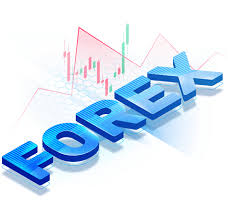The Dynamics of Forex Trading Business A Comprehensive Guide 1653719204

The Dynamics of Forex Trading Business: A Comprehensive Guide
The Forex trading business has rapidly evolved into one of the most lucrative and captivating arenas for both seasoned investors and budding traders. With a daily trading volume exceeding $6 trillion, the foreign exchange market (Forex) boasts unparalleled liquidity, making it a focal point for traders globally. Understanding the intricate dynamics of Forex trading is essential for achieving sustainable success in this competitive landscape. For those seeking to engage with the market effectively, consider exploring forex trading business Indian Trading Platforms that offer robust trading solutions.
What is Forex Trading?
Forex trading involves the buying and selling of currency pairs, where traders aim to profit from the fluctuations in exchange rates. Unlike stock markets, the Forex market operates 24 hours a day, five days a week, allowing traders to enter and exit trades based on real-time market movements. The primary goal is to exchange one currency for another in anticipation of price changes, leveraging both extensive knowledge of market conditions and an understanding of technical and fundamental analysis.
The Structure of the Forex Market
The Forex market is decentralized and operates without a central exchange. Instead, it consists of various financial institutions, banks, brokers, and retail traders that facilitate currency transactions. The market can be categorized into three primary segments:
- Spot Market: This is where currencies are traded for immediate delivery and settlement. Transactions occur “on the spot,” reflecting current market prices.
- Forward Market: In this segment, contracts are created to buy or sell currencies at a predetermined price for future delivery. This allows traders to hedge against potential fluctuations.
- Futures Market: Similar to the forward market, futures contracts are standardized agreements to buy or sell a specific currency amount at a set price on a future date.
Understanding Currency Pairs
In Forex trading, currencies are quoted in pairs. Each pair consists of a base currency and a quote currency. For example, in the EUR/USD pair, the Euro (EUR) is the base currency, while the US Dollar (USD) is the quote currency. The price of a currency pair reflects how much of the quote currency is needed to purchase one unit of the base currency. Understanding these pairs is crucial for making informed trading decisions.

Types of Forex Traders
Forex traders can generally be classified into three main categories: scalpers, day traders, and swing traders.
- Scalpers: These traders make numerous trades throughout the day, aiming for small price movements. Scalping requires intense focus and quick decision-making skills.
- Day Traders: Day traders typically open and close their positions within the same trading day. They analyze intraday price movements to capitalize on market volatility.
- Swing Traders: Swing traders hold positions for several days or weeks, aiming to profit from larger price shifts. This approach requires a strong understanding of market trends and analysis.
Fundamental and Technical Analysis
Successful Forex trading relies heavily on analysis. Traders often employ two primary analytical methods: fundamental analysis and technical analysis.
Fundamental Analysis
Fundamental analysis focuses on economic indicators, geopolitical events, and central bank policies. Traders evaluate the overall health of an economy by analyzing factors such as interest rates, employment figures, inflation rates, and political stability. Significant economic reports, like GDP data and employment statistics, can have substantial impacts on currency values.
Technical Analysis
Technical analysis, on the other hand, involves studying historical price movements, chart patterns, and indicators to forecast future price action. Traders use tools like moving averages, Fibonacci retracement levels, and oscillators to identify entry and exit points. Understanding trends and market sentiments through charts helps traders make informed decisions based on market behavior.

The Role of Forex Brokers
Forex brokers serve as intermediaries between traders and the Forex market. They provide access to trade execution through trading platforms and offer various services such as research, analysis, and educational resources. Choosing the right broker is crucial, as it can influence trading costs, execution speed, and the range of available currency pairs.
Risk Management in Forex Trading
Effective risk management is vital for long-term success in Forex trading. Traders must be aware of the risks involved and implement strategies to mitigate potential losses. Some essential risk management practices include:
- Setting Stop-Loss Orders: Establishing predetermined price levels at which trades will close to prevent excessive losses.
- Diversification: Spreading investments across different currency pairs to minimize risk exposure.
- Managing Leverage: Using leverage responsibly can amplify profits but also increases the risk of substantial losses.
The Importance of Education and Continuous Learning
The Forex market is constantly evolving, and traders must stay updated with the latest trends, technologies, and strategies. Continuous education through online courses, webinars, and trading communities can help traders refine their skills, improve their strategies, and remain competitive in the Forex landscape. Developing a strong foundational knowledge of market dynamics is essential for making informed trading decisions.
Conclusion
The Forex trading business offers immense opportunities for those willing to invest time, effort, and resources into understanding the market. By grasping the fundamentals of trading, analyzing market trends, and practicing effective risk management, traders can navigate the complexities of Forex with confidence. Whether you are a beginner or a seasoned professional, continuous education and adaptability will play vital roles in achieving long-term success in this dynamic marketplace.

